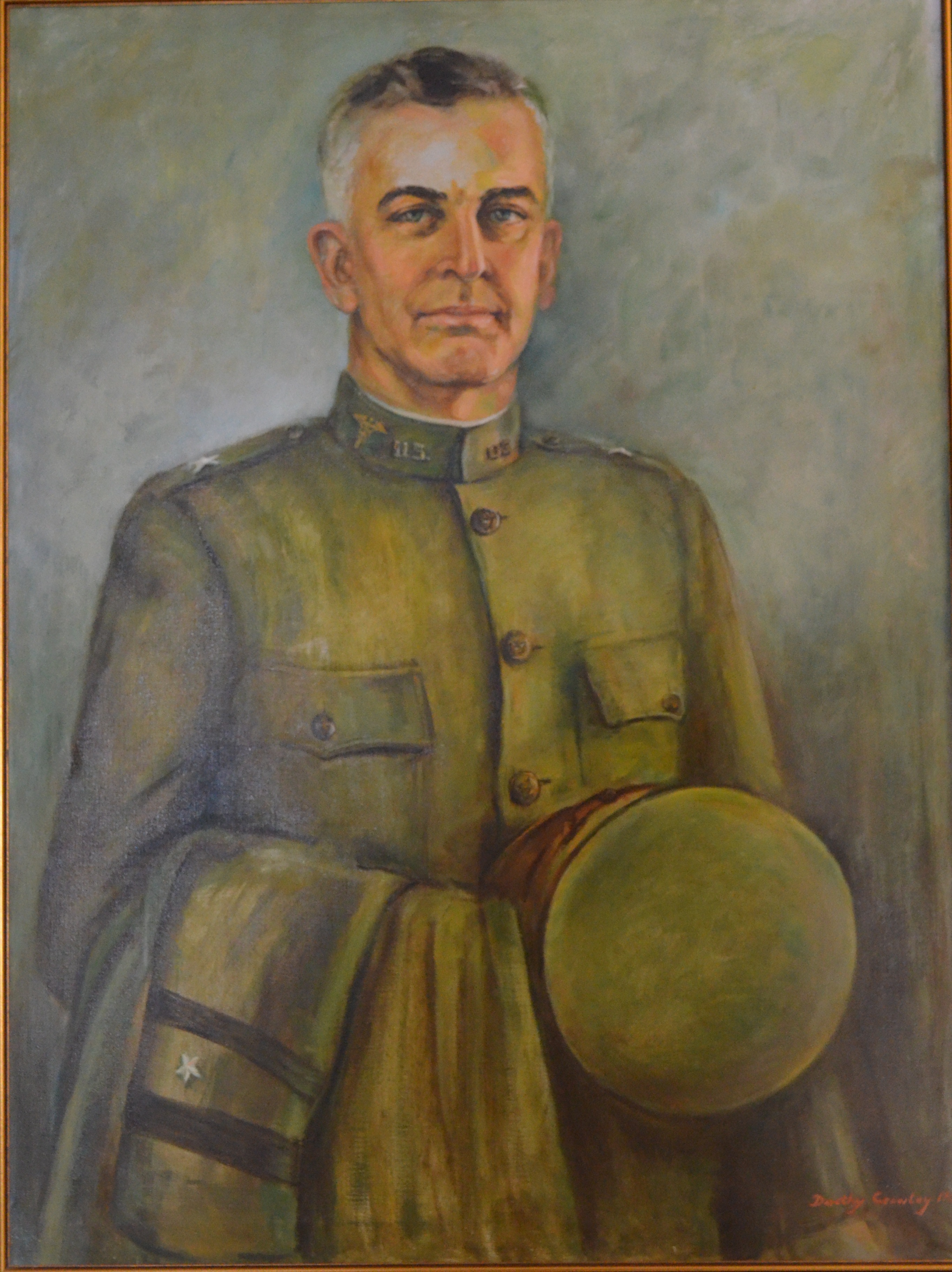Lyster Army Health Clinic History
The United States Army Hospital, Camp Rucker, Alabama was constructed during a 120 day period and opened to receive patients on 1 May 1942. Designed as a part of the War Department’s huge military expansion program following the Pearl Harbor attack, it was a cantonment type building with a 1,750 bed capacity. The first Hospital Commander and Post Surgeon was Colonel Harold P. Sawyer, MC. Camp Rucker was placed on a standby basis in February, 1946, and the Hospital was closed. Reactivation was ordered in August 1950, and the hospital reopened with a 1,000 bed capacity. In June 1954 Camp Rucker was placed on standby again and the hospital closed.
In August 1954, the Army Aviation School was moved from Fort Sill, Oklahoma, to Fort Rucker, Alabama, and was designated the Army Aviation Center a permanent post. The hospital was reopened and operated in the original cantonment structure.
The need for a modern permanent structure was recognized with the establishment of the Aviation Center and Aviation School at Fort Rucker. In early 1964, Congress appropriated funds for the construction of a 75 bed permanent hospital.
On 5 March 1964, the Surgeon General officially named the proposed hospital in honor of Brigadier General Theodore C. Lyster, “Father of Aviation Medicine”.
The building was designed by Charles H. McCauley and Associates, architects from Birmingham, AL. The plans were approved and the building constructed under the supervision of the Mobile District of the U. S. Army Corps of Engineers. COL R. C. Marshall was the district engineer and his representative at Fort Rucker was Wike Ivey resident engineer. Work on the new hospital structure began on 23 July 1964. Throughout the planning, building and furnishing of the hospital, the first and foremost concern of all involved was that of patient care. The Army Medical Corps functions with the credo that “the patient is the most important person in its mission.” In building the new hospital at Fort Rucker the underlying theme was that of patient consideration.
On February 18, 1967, Lyster Army Hospital was officially accepted for occupancy. Lyster Army Community Hospital provided an array of outpatient medical care along with inpatient medical care to the active duty Soldiers and their Family members, along with the numerous retirees and their Family members in the surrounding area, until November of 2004.
On November 4, 2004, Lyster Army Community Hospital was officially designated as Lyster Army Health Clinic.
The Home of Army Aviation became Fort Novosel during a redesignation ceremony April 10, 2023 named in honor of CW4 Michael J. Novosel Sr., a Medal of Honor recipient.
Lyster Army Health Clinic continues its quest to care for Army Aviators and their Families, in addition to providing medical support for the military retiree population. It remains a model of the same high standards set by Brigadier General Lyster. As Brigadier General Lyster stated, “It is one thing to build machines and train men to fly them, but another to maintain these men and machines in the air by the constant supervision necessary. This is a far reaching problem which is imminently involved in the evolution of the Air Service and largely falls upon the Medical Service to keep these fliers at their greatest efficiency.”

Brigadier General Theodore C. Lyster
“Father of Aviation Medicine”
Brig. Gen. Lyster received his degree from the University of Michigan Medical School in 1899. He was a veteran of the Spanish-American War, entering the service as an assistant surgeon in 1900, and was promoted through the ranks to that of lieutenant colonel in 1917. In 1919, he was retired with the rank of colonel. By an Act of Congress in June 1940 he was promoted brigadier general retired. He was Chief of Aviation and Professional Services in the Surgeon General’s Office, 1917 – 1918 for which he was awarded the Distinguished Service Award. It was by War Department order on September 6, 1917, that Theodore Lyster became the first Chief Surgeon, Aviation Section, Signal Corps, U. S. Army. His relentless efforts to create the new post and the manner in which he proved the importance of the position as it first occupant, earned him the title of “Father of Aviation Medicine.” Although BG Lyster’s most significant contribution was pioneering aviation medicine, he was instrumental in many other areas. He was primarily responsible for standardizing and expediting physical examinations and organizing the Medical Research Board. Following a visit to Europe in 1918, Dr Lyster conducted numerous research studies on the “Care of the Flyer” which lead to substantial improvements in treatment and recovery. His studies of yellow fever are of lasting relevance in the annals of medical history. BG Lyster once stated, “It is one thing to build machines and train men to fly them, but another to maintain these men and machines in the air by the constant supervision necessary. This is a far reaching problem, which is imminently involved in the evolution of the Air Service, and largely falls upon the medical service to keep these fliers at their greatest efficiency."